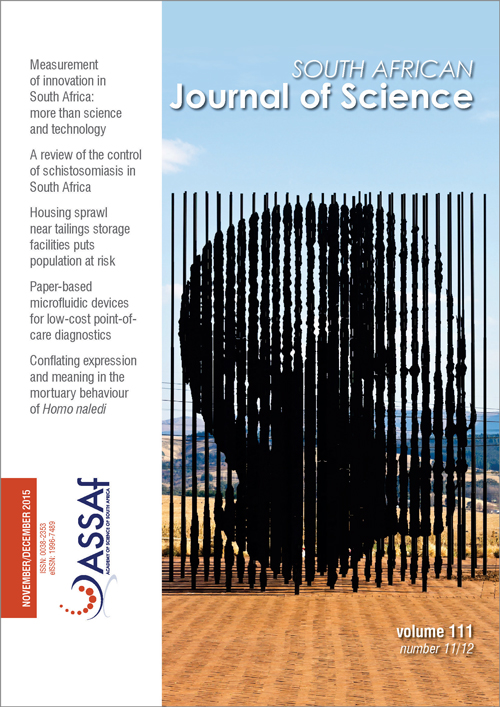Insecticide resistance in the malaria vector Anopheles arabiensis in Mamfene, KwaZulu-Natal
DOI:
https://doi.org/10.17159/sajs.2015/20150261Keywords:
malaria vector control, malaria elimination, vector surveillance, South Africa, resistance managementAbstract
The control of malaria vector mosquitoes in South Africa’s affected provinces is primarily based on indoor spraying of long-lasting residual insecticides. The primary vectors in South Africa are Anopheles arabiensis and An. funestus. South Africa’s National Malaria Control Programme has adopted a malaria elimination agenda and has scaled up vector control activities accordingly. However, despite these plans, local transmission continues and is most likely because of outdoor feeding by populations of An. arabiensis. An outdoor Anopheles surveillance system has been set up in three sections of the Mamfene district in northern KwaZulu- Natal in order to assess the extent of outdoor resting An. arabiensis in Mamfene and to assess the current insecticide susceptibility status of this population. According to WHO criteria, the An. arabiensis samples tested showed evidence of resistance to deltamethrin (pyrethroid), DDT (organochlorine) and bendiocarb (carbamate), and full susceptibility to the organophosphates pirimiphos-methyl and fenitrothion. Pre-exposure to piperonyl butoxide completely nullified the deltamethrin resistance otherwise evident in these samples, supporting previous studies implicating monooxygenase-based detoxification as the primary mechanism of pyrethroid resistance. The data presented here affirm the presence of pyrethroid and DDT resistance previously detected in this population and also indicate the comparatively recent emergence of resistance to the carbamate insecticide bendiocarb. These data show that special attention and commitment needs to be given to the principles of insecticide resistance management as well as to investigations into alternative control techniques designed to target outdoor-resting An. arabiensis in northern KwaZulu-Natal.
Published
Issue
Section
License

All articles are published under a Creative Commons Attribution 4.0 International Licence
Copyright is retained by the authors. Readers are welcome to reproduce, share and adapt the content without permission provided the source is attributed.
Disclaimer: The publisher and editors accept no responsibility for statements made by the authors
How to Cite
- Abstract 701
- PDF 537
- EPUB 220
- XML 235












.png)